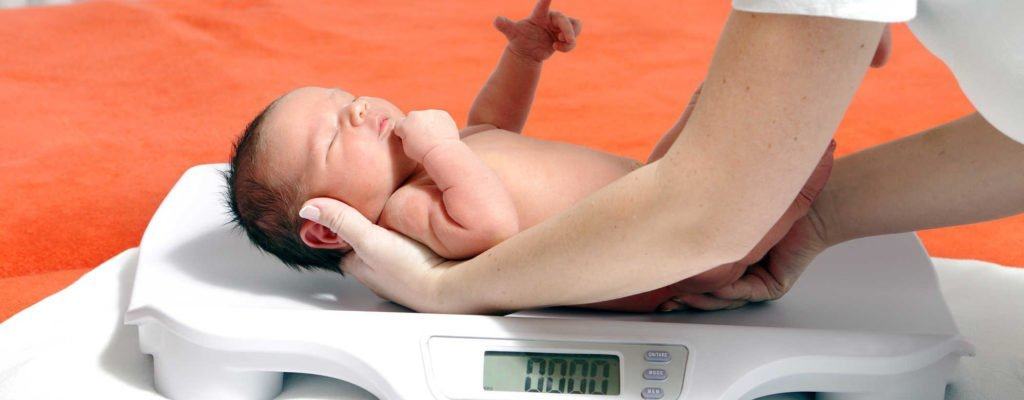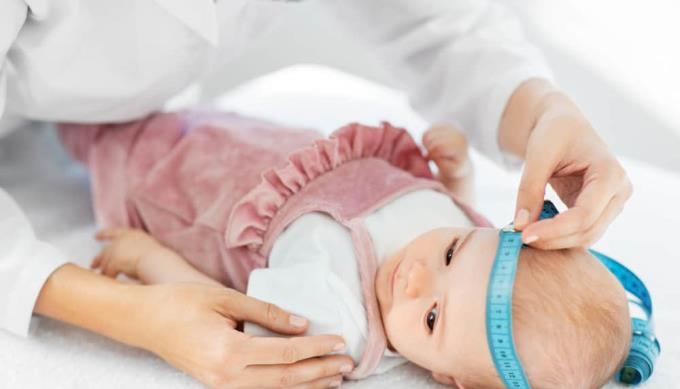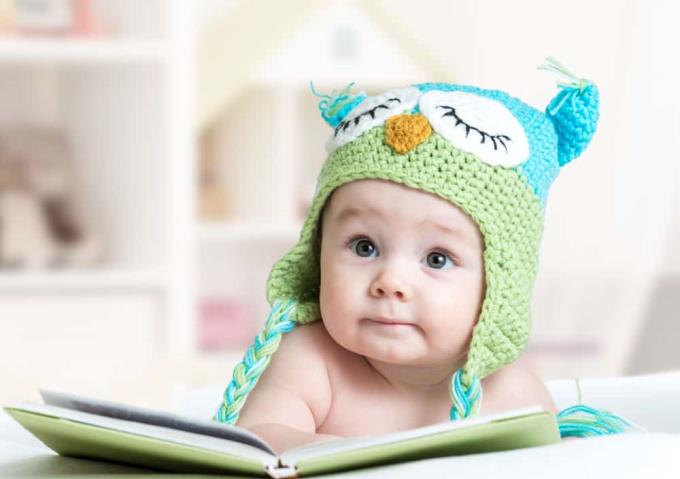Ways to determine an infants caloric needs

Learn how to determine your baby’s caloric needs, including the calories in breast milk and formula, to ensure your infant gets the right nutrition for healthy growth.
From the womb days to birth, the baby's development has been closely monitored. In addition to weight and height index, head circumference is also an important parameter in evaluating and controlling children's growth in each stage.
Throughout your baby's early years, during each routine visit, your doctor will record parameters related to your child's development including weight, height and head circumference. Based on that, the doctor can evaluate that the child is developing healthy or not and whether there are any problems hindering this process or not.
Head circumference is the distance one circle from the center of the forehead, through the most protruding part behind the head and back to the forehead. The doctor will use a tape measure placed around the baby's head, just above the ear to measure this parameter. Although there is no pain during the measurement, most children are fussy and unable to hold their heads still, making it difficult to obtain accurate results from the first time.
The results obtained will be used to compare with the standard growth chart , thereby helping the doctor determine what percentage of the head circumference according to the age and sex of the child will fall. Percentile lines are used to compare existing values with known statistics on previously surveyed populations. For example, the measured infant head circumference is in the 30th percentile, which means that the baby has a head circumference greater than 30% of children of the same age and sex.
A full term baby usually has a head circumference a few days after birth about 34.9cm. After a month, this number will increase to about 38.1cm. However, there are slight differences in normal head circumference by sex (male or female) at the same month of age. Boys tend to have a larger head circumference than girls.
Therefore, the concept of a child's normal head circumference will not be absolute. In addition, genetic factors can also affect this parameter in the child.

The children's growth was not the same and so was their head circumference.
Usually, the baby's head circumference will be about 2cm larger than the bust in babies under 6 months old . There is rapid growth around the first 4 months of life.
Then, from 6 months to 2 years old, the bust and head measurements will be about the same.
From 2 years of age or older, the baby's body size will grow faster than the head size.
Below is a chart to help track the head circumference of boys and girls for each month of age.
Baby boy, up to 36 months old
Month of age 30th Percentile (cm) 50th Percentile (cm) 75th Percentile (cm) 97th Percentile (cm)
0 31.4876235.8136737.0042638.85417
12.5 44.13646.4985347.3709148.96494
24.5 46.0087248.7206549.6776251.36998
36 46.4334449.6839450.7559752.57205
Baby girl, up to 36 months old
Month of age 30th Percentile (cm) 50th Percentile (cm) 75th Percentile (cm) 97th Percentile (cm)
0 31.930234.7115635.8512438.1211
12.5 42.842645.1950846.0653247.65766
24.5 44.8467847.5368848.4754850.12271
36 45.5828448.6334249.6665651.44519
For more complete information on the development of the baby's head circumference by stage, you can refer to the data in the article " Data sheet on infant circumference by month " .

Is children's intelligence related to head circumference? This is definitely the concern of many parents when monitoring this parameter in the child's development.
The truth is:
It has been reported that during the first year, babies with large heads will often have a higher IQ when they are between the ages of 4–8. However, don't worry if your baby has a smaller head circumference than other kids.
Many other factors such as age of still breastfeeding, parental education and developmental environment also affect the child's IQ.
Your doctor will rely on a record of your baby's growth and developmental records from birth to let you know if there is anything to worry about. Abnormal cases rarely occur, if any, are associated with other health problems such as abnormal urinary system, heart, bone or kidney, cerebral palsy, epilepsy. Early detection of these conditions will help parents find suitable and effective treatments for their child, including surgical options. Most children, after going through treatment and surgery, make a full recovery and continue to live a normal adult life.
Head circumference is a parameter that shows the level of development and growth of a child. Therefore, you need to take your child for regular check-ups , especially in the early years of his life, for the doctor to check and monitor regularly. Normally, whether this parameter is big or your baby depends on many different factors, so to identify abnormalities in your baby's development, you need to consult a doctor.
Learn how to determine your baby’s caloric needs, including the calories in breast milk and formula, to ensure your infant gets the right nutrition for healthy growth.
Discover the top 5 smartest dog breeds in the world, including Border Collie, Poodle, German Shepherd, Golden Retriever, and Doberman Pinscher. Learn about their unique traits and why they are considered the most intelligent dogs.
Discover 7 nutritious and delicious ways to cook egg porridge for babies, including recipes with cheese, pumpkin, tomato, and more. Learn how to prepare baby-friendly egg porridge with our expert tips.
After a series of medical measures they obtained a complete human vascular system profile.
Watermelon is one of the fruits that many people love, not only cheap but also delicious, nutritious and refreshing in the summer. To get delicious watermelon pieces, show off your housewives, your artistic talents to cut beautiful pieces of watermelon.
aFamilyToday Health - The digestive system and body in each baby is different. Parents need to recognize notes to deal with when babies have a food allergy!
Babies need many factors for perfect development. aFamilyToday Health shares with parents things to keep in mind when babies are 8 weeks old so that parents can take care of their babies the best!
Babies need many factors for perfect development. aFamilyToday Health shares with parents things to keep in mind when babies are 18 weeks so that parents can take care of their babies the best!
Babies need many factors for perfect development. aFamilyToday Health shares with parents things to keep in mind when babies are 28 weeks old so that parents can take care of their babies the best!
Babies need many factors for perfect development. aFamilyToday Health shares with parents things to keep in mind when babies are 32 weeks old so that parents can take care of their babies the best!








